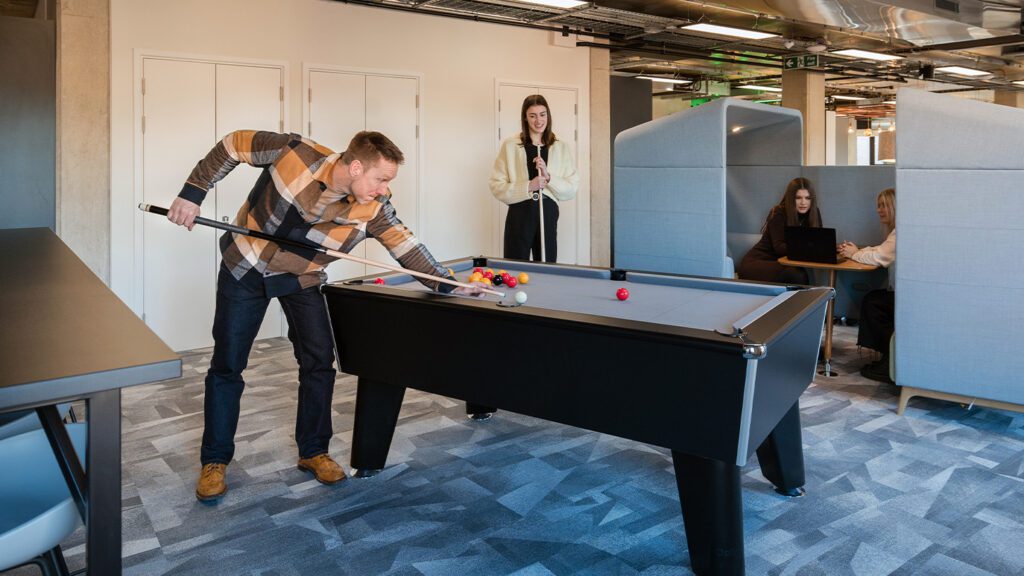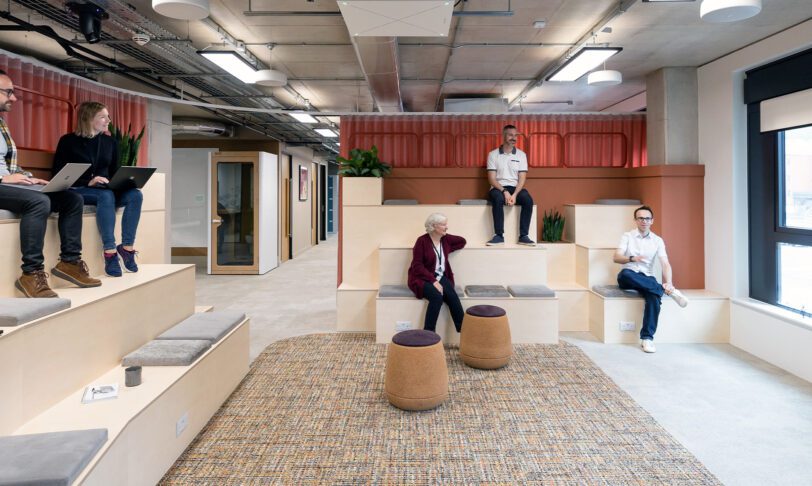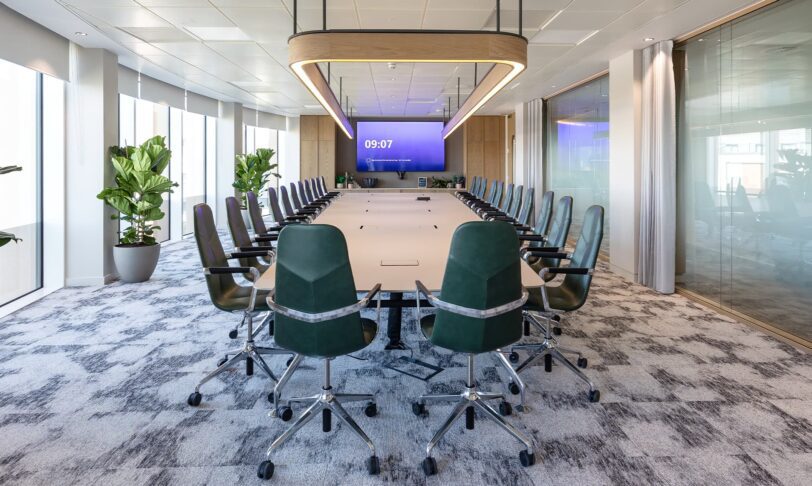Managing culture change in the workplace
Change has always been part and parcel of the business landscape, but this has been particularly evident in the last few years. Against a backdrop of new hybrid work models and technological innovation, more and more businesses are concerned with ‘future proofing’ themselves and reaching contortionist-levels of flexibility.
What mustn’t be overlooked is the extent to which workplace culture can facilitate or hinder change. After all, culture is at the heart of every business. It not only affects “who” we are as organisations but directly impacts the results we are able to achieve. For example, research from the Boston Consulting Group has found a clear link between workplace culture and successful digital transformation initiatives.
It makes sense that many organisations view culture as a cornerstone of their success, and are therefore reluctant to embrace that it might change. But the fact of the matter is that some cultures become outdated and others must evolve as businesses adapt and grow.
In this article, we’ll look at what constitutes workplace culture change, what motivates it, and what obstacles to look out for. Finally, we’ll present tips for successfully managing the culture change process. Let’s get started with a straightforward definition.
What is workplace culture change?
There’s no denying that culture change is a big topic, but management consulting juggernauts Gartner have summarised it pretty well:
“Cultural change is the process in which an organisation encourages employees to adopt behaviours and mindsets that are consistent with the organisation’s values and goals.”
Neat though this definition may be, it also highlights some of the challenges ahead. Changing long-standing behaviours can be difficult enough – but changing mindsets is much easier said than done.

What motivates culture change in the workplace?
True workplace culture isn’t something that’s conjured up by directors as a piece of handy marketing collateral to whip out when needed. Just like society at large, workplace culture should be dynamic and reflective of a company’s goals and the needs of its employees. Here are just a few common prompts for change that leaders should take stock of:
Employee feedback
People are at the heart of workplace culture, and the best insights usually come from employees at the coalface – so their feedback should be taken seriously as a catalyst for change. Adopting this kind of attitude shows that employee’s voices are being heard, which is also among the biggest drivers of employee engagement. So before you consider roping in any consultants, leaders need to reach out to employees to ascertain what’s working and what isn’t.
Company growth
Rapid growth is a sign of success – but it can lead to businesses losing sight of their identity and culture. Knowing “who” you want your business to be, and ensuring that your company reflects that, creates a sense of common purpose and guides day-to-day workplace behaviours. In an ideal scenario, culture aligns with strategy and contributes to the realisation of strategic goals.
Productivity
The adage “work smarter not harder” lies behind changes that enhance productivity. But with people and departments being accustomed to certain ways of working, it can be hard to make changes stick. The key to adopting these changes successfully lies in adapting business culture to be receptive to change, growth, and development.
Wellbeing
Noticing a drop in morale or issues with retention? It could be that your workplace culture is having knock-on effects on employee wellbeing. For instance, your efforts to stoke the coals of productivity could in fact, be causing bright sparks to burn out. If you fear this might be the case, your workplace culture is due a seismic shift, and it cannot be overstated how crucial employee wellbeing is to engagement, productivity and ultimately better organisational outcomes.
Leadership change
With new leadership comes bright new ideas, strategies and priorities, and workplace culture needs to support these. As we’ll discuss throughout this article, culture begins with leadership and management. However, you’ll also need people who are eager to embrace change at every level of your organisation for it to work.
The Bulletproof Culture Guide for growing businesses
Everything you need to know about creating a best-in-class workplace culture. Ideal for growing businesses. Download now.

Transforming a negative workplace culture
Most people think of a negative workplace culture as being overtly toxic, with issues like bullying, excessive competition or poor leadership often being discussed in this context. Think The Apprentice meets David Brent. But a negative workplace culture can be much more subtle than that. It could be a tendency towards stagnation, even regression, where creativity and innovation take a backseat in favour of a business-as-usual approach.
Transforming a negative workplace culture means injecting positivity, energy, and creativity into every aspect of work. It begins at the top with leaders and managers, but for it to filter down, it has to become a clearly stated goal that everyone is aware of, supports, and sees as necessary.

Overcoming the obstacles to workplace culture change
Change management is a topic that has launched thousands of research papers and models. But simply implementing an accepted model doesn’t guarantee success.
Spotting and overcoming obstacles to change requires flexibility and a proactive approach that addresses typical stumbling blocks before they can derail or delay your change management process. Here are some of the most common issues that arise when attempting to manage workplace culture change.
An unclear strategic vision
Formulating a strategic vision is a high-level activity. And it’s not just about culture, but what you hope that culture will achieve for the business. Brainstorming the way forward with top management may clarify this, but achieving it requires organisation-wide support.
This means collaboration, interaction, and give-and-take that involves the entire team. It may even mean adjusting your strategies based on the feedback you receive. Clarity and a sense of ownership allows your team to understand what you’re hoping to achieve and helps to gain the support you need to turn it into a reality.
Pushback from employees
Many people are uncomfortable with change and adopt an ‘if it isn’t broke’ mindset. This is a common and completely understandable reaction for people being asked to step out of their comfort zones. However, leaders need to build a culture where change drums up feelings of excitement – not fear.
Present change as positive, but be ready for pushback. And when you encounter it, listen carefully to the voices that are raised. After all, a positive workplace culture is one where people feel that they’re being heard, and more often than not their concerns are legitimate. Those who seem the most resistant should be listened to – if handled properly they often turn out to be the biggest advocates of change once they begin to experience the benefits.
Uncertainty regarding ownership
When transforming your business culture, many people may feel uncertain about their roles in effecting change. They may see it as only a concern for those higher up the chain – which is a classic sign of disengagement.
To be successful, change of any kind requires a sense of ownership at all levels. That means showing people what their roles are, providing practical examples, and being ready to provide individual guidance. It takes a team to enact change, and each team member has a valuable contribution to make.
Mismanaged expectations
It’s possible to be so excited about change that you unwittingly create expectations that won’t materialise. The key is to be realistic about what can be achieved in a certain time, and the extent to which a proposed cultural change will affect an organisation. People need to understand that culture change is an ongoing, incremental process that can be transformative if given the time and effort it needs.
Changing workplace culture through leadership
Before you can lead change, you need a very clear roadmap to follow. The role of leadership in change management begins with strategy. This means answering three important questions:
- Where are we now? Get the answers from both managers and employees. What do they think characterises the current culture? Look for practical examples of how that culture expresses itself in the workplace to get confirmation.
- Where do we want to be? This is when you need to get SMART. This means not only conceptualising the ideal workplace culture as a series of tangible goals but also understanding what measures can be used to evaluate the success and impact of any large-scale change.
- How will we get there? Workplace culture change needs to be a clear pathway with roles, responsibilities and objectives. Along the way, you’ll use a range of performance indicators to see if you’re on track such as employee engagement, customer satisfaction and retention.
A change management strategy that may have seemed perfect when discussed at the boardroom table may play out in unexpected ways. Your roadmap to culture change may prove to be flawed when put into practice, and there will be times when you need to adjust your methods, timelines, and objectives.
Although employees may be among the first to spot obstacles and flaws, it will be up to leaders to address them. Once again, an interactive process in which results are evaluated and input is taken on board helps to smooth the path to your goals. Leading change is exciting but challenging, and flexibility and a willingness to collaborate and adapt are often required on the road to cultural change.

Our tips for implementing cultural change in the workplace
We’ve covered a lot of ground in this article and it’s time to bring it all together. Here are some of our top tips for managing effective cultural change in the workplace:
Perfect your strategy
“Soft” though culture change may sound, it’s a proven route to measurable, tangible success.
Your business culture serves your organisational goals and contributes to their realisation. Begin with a clear strategy but be ready to adjust and perfect it as you go. This means giving people the opportunity to give their two cents on how strategies can be refined and improved.
Get buy-in from leaders at all levels
For any efforts to change workplace culture to have longevity, leaders and influencers need to be on board. This means ensuring they fully understand the strategy and helping them articulate the benefits of culture change when needed. This will help cultivate a feeling of excitement that should trickle down to all levels of your organisation.
Make progress gradual and incremental
Workplace culture change isn’t a 60 Minute Makeover. It needs to be built from the ground up and broken down into a series of realistic milestones. It’s also crucial that everyone is aware of the implementation timeline so that employee buy-in doesn’t wane due to mismanaged expectations.
Assign clear roles and responsibilities
Without clear deliverables, timelines, and assigned responsibilities, no business strategy will succeed. Your organisational change management strategy is no exception to the rule. If everyone thinks that it’s someone else’s job to enact change, progress will be glacial at best.
Prioritise communication
Communication needs to be two-way, rather than top-down, for cultural change to be successful. This means everyone’s thoughts, feelings and concerns have validity. Also, if you’re venturing into uncharted territory, people need to understand that you may not always have all the answers. But if you’ve articulated your strategy clearly enough, people will trust your vision.
Make it easy for people to adapt by adjusting the physical environment
Imagine this. Your employer says they want to achieve a workplace culture change, but you’re still stuck in the same old cubicle doing the same old things. Will change seem meaningful to you?
Consider the physical workplace in relation to your goals. Do you want to promote wellbeing? Are you hoping for better communication and enhanced collaboration? Do you want to spark creativity and enhance productivity? The design of your workplace conveys unspoken messages that guide behaviour and can contribute to your goals. Examples might include:
- Collaborative spaces that promote formal and informal communication in and across teams.
- Flexible spaces that allow you to conduct town halls or facilitate brainstorming as you roll out cultural change.
- Exciting workspace options that give people the choice to work in ways that allow them to do their absolute best.
- Promoting wellbeing by design. This is something we touch upon in our guides to designing for neurodiversity, inclusive workplaces and the benefits of wellbeing in the workplace.
- Private spaces where people can feel safe to share their views and express any concerns.
- Designing for accessibility and diversity to reinforce that people are valued for who they are and what makes them unique.
Interaction is a team of expert workplace designers and strategy consultants, who can help you map out a cultural change and design and build a workplace that’s conducive to success. To find out more about what our team can do for you, get in touch at 01225 485 600 or why not schedule a chat with Charlie, our Relationships and New Accounts Manager today?



